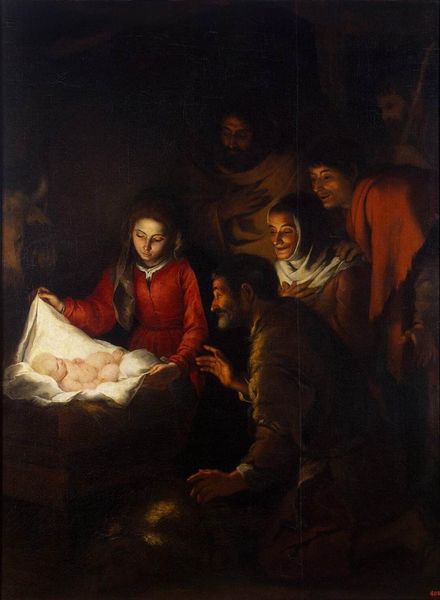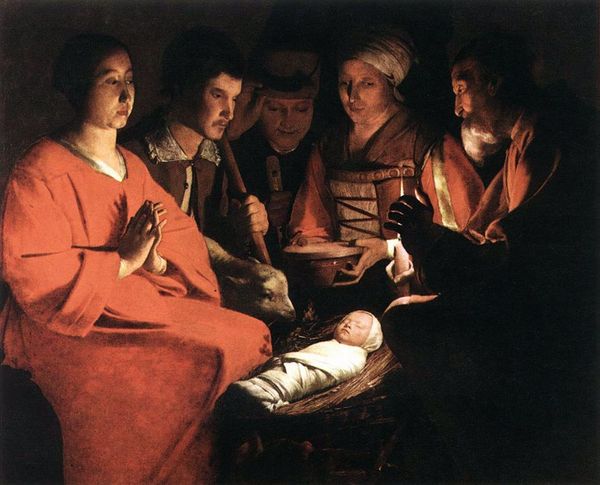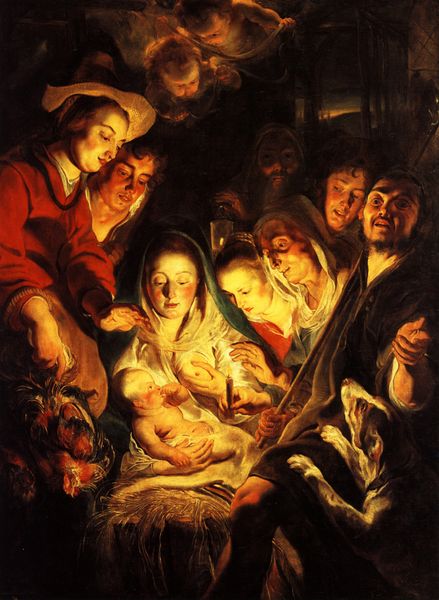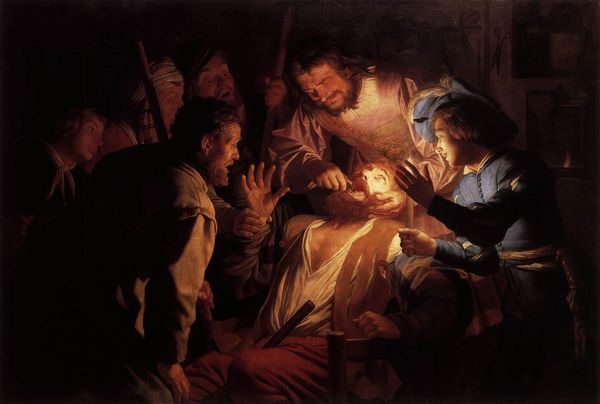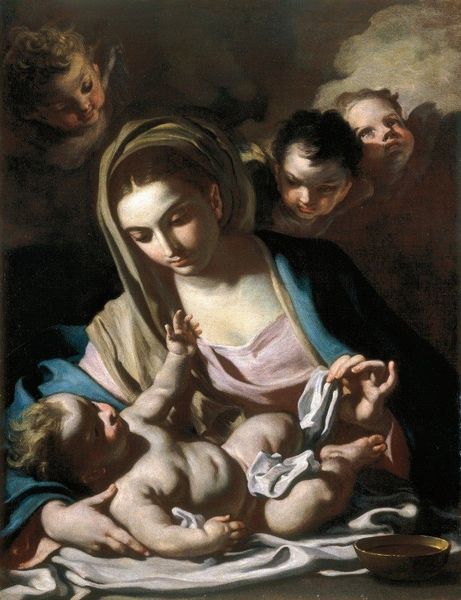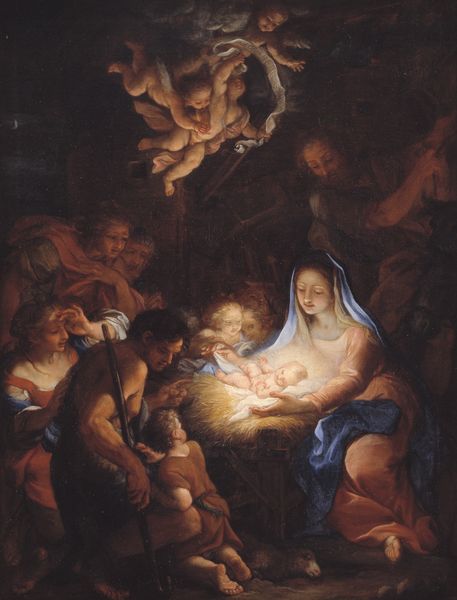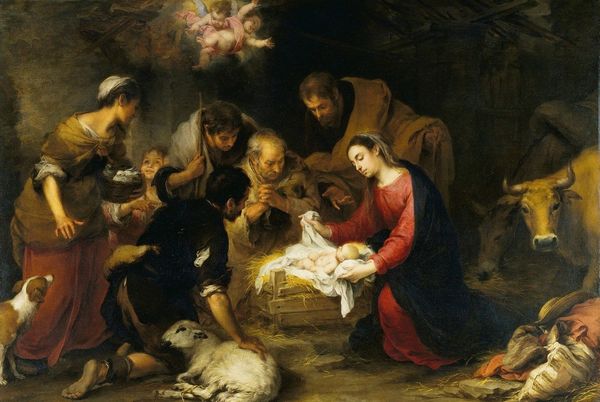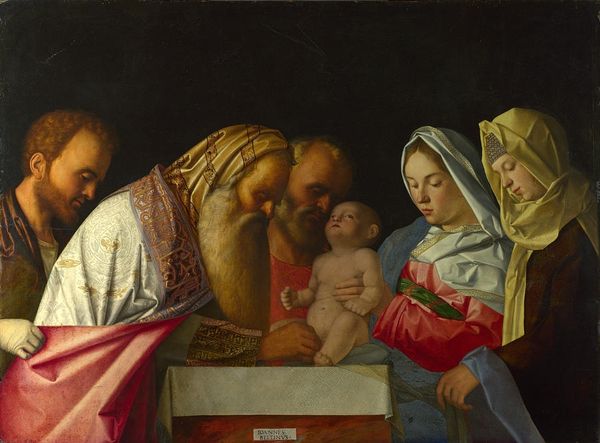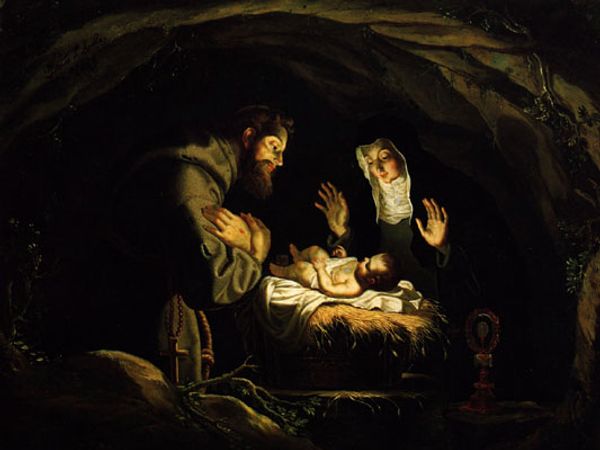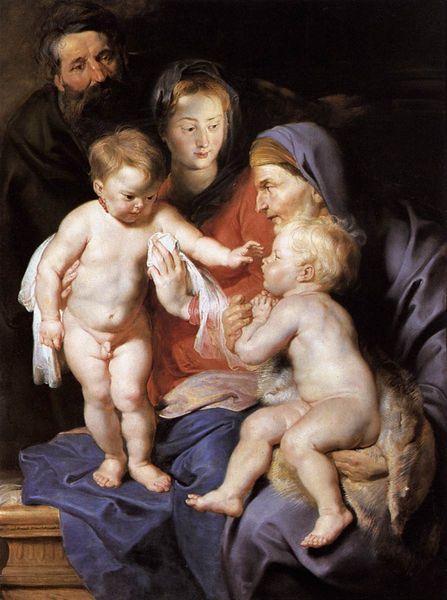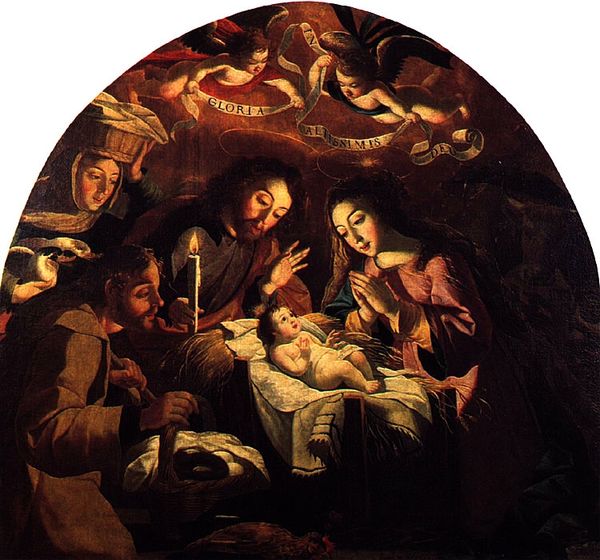
painting, oil-paint
#
portrait
#
baroque
#
painting
#
oil-paint
#
figuration
#
chiaroscuro
Copyright: Public Domain: Artvee
Curator: What a lovely moment. Van Honthorst's oil painting, "Adoration of the Child," from about 1620, truly captivates. The subject is bathed in a soft, divine glow, as a young Jesus lies swaddled in a manger. Editor: The first thing that strikes me is the dramatic lighting. The deep blacks around the edges focus your eyes so intensely on that central illumination. It’s intimate but also theatrical. Curator: Exactly! It's a masterclass in chiaroscuro, where light and shadow play an incredibly important role. Note the single source of light emanating from the infant Jesus. It symbolizes his divine presence, pushing back the darkness of ignorance and sin. Think about the psychological impact this image has on the viewer: the figures’ gazes are all focused downwards towards Jesus, beckoning us to also participate in this adoration. Editor: That almost overwhelming darkness definitely directs your interpretation, wouldn’t you say? It sets a specific tone, an almost mystical reverence. This wouldn’t have simply been an artistic choice but a calculated strategy meant to prompt a spiritual experience. Baroque art often functioned this way, no? Curator: Yes, you’re spot-on! Baroque art, with its heightened emotionality and dynamic compositions, frequently aimed to inspire religious fervor. And Van Honthorst's positioning is critical: look how he sets the main figures within an immediate embrace with the subject, inviting anyone to venerate him as divine. Even in their eyes there is no ambiguity. They appear at peace. Editor: Beyond the religious aspect, you can see echoes of the Counter-Reformation—using visual drama to re-enthrall viewers, reclaim spiritual ground through emotive displays. It makes you wonder what it meant to view it when faith itself was contested. Curator: Perhaps an invitation back to spiritual assurance through a tender, familial, even comforting scene? These biblical depictions provided the population an understanding of their faith, using imagery and light to explain their relationship with God. Editor: Agreed, and looking at the reception it’s achieved down the centuries reveals this painting is effective. To witness the image anew gives insights on social control and the power dynamics inherent in religious artwork. Curator: Indeed. It makes the painting so much more than just brushstrokes and pigment, doesn’t it? Editor: Absolutely. Each character rendered by the artist feels charged with their own inner purpose, as each symbol takes us one step further to understanding their relation to each other and the Christ child.
Comments
No comments
Be the first to comment and join the conversation on the ultimate creative platform.
